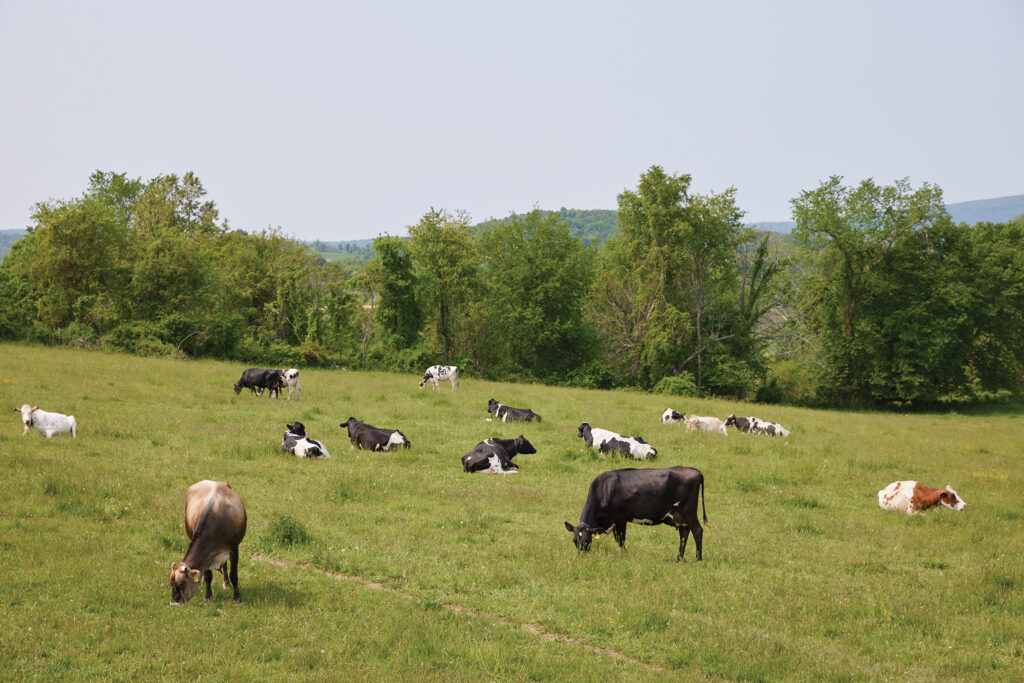Tough Times For Dairy Farmers
By ML Ball
Photos by Ryan Lavine
“I grew up on a farm.” Six simple words, but when said by dairy farmers Barry, Rory, and Sarah Chase, Rick and Dan Osofsky, John Boadle, Lloyd Vaill, Sr., Lloyd Vaill, Jr., and Ben Prentice, they speak volumes.
The nine farmers all appear in the film, Our Farms, Our Farmers, shot in and around Pine Plains and produced by Little Nine Partners Historical Society. In the film, their passion for cows and for farming itself is unmistakable, but so are the pressures they face trying to make a living.
In recent conversations with David Chase of Chaseholm Farm and Rick Osofsky of Ronnybrook Farm, the struggle becomes clear.

“These are bad times right now for dairy farmers, in this area anyway,” says Chase.
Osofsky offers the following disheartening statistics: “In 1980, there were 650,000 family dairy farms. Today, there are 21,000. We’ve lost 629,000 farms, but the number of cows has remained the same. They’ve been absorbed by the big industrial farms.”
What caused the change? According to Chase and Osofsky, a whole host of factors, many dating back to the 1930s. “For one thing, the cost of everything went up,” Chase says. “The tractor I bought for 8,000 dollars is now 40,000. Soybeans are now sold to China so you have to pay that much more for your grain. Plus, high taxes. If the price of milk is high, that’s not so bad but when the price is low, you’re dead in the water.”
And therein lies the fundamental problem: the price farmers are paid for their milk.
“It’s the economics of supply and demand,” Chase says. “We produce too much milk in this country and it keeps prices low.”
Osofsky explains further: “Dairy is very unique. It’s the most complicated industry that exists in this country. Part of the problem is all the non-milk milks. During the Depression, a regulation got passed that is still on the books today that says you cannot legally call something milk if it does not come from the mammary glands of a lactating animal. But it’s not enforced, so things like soy milk, almond milk, and oat milk are allowed to use the word ‘milk,’ which directly hurts the dairy business.”
Also during the Depression, Osofsky says, the U.S. government wanted to make sure that there was always a surplus of milk because milk was considered essential to children’s health. “They created federal milk marketing orders which guaranteed farmers a minimum price for their milk, but farmers had no control over that price,” he says. “The government controlled the price and they still do. There’s not a thing we can do about it, for almost 100 years.”
It hasn’t helped matters that several years ago, whole milk was determined to be bad and low-fat milk to be good, particularly for overweight children, a theory that has been debunked, repeatedly. Then there was a real estate boom in the 1980s and several local farmers sold their farms, thereby decreasing land available for farming.
The good news is that all is not lost. There are solutions. Farmers can put their land in a land conservancy, as Chase has done. They can also alter their business model and sell directly to consumers, charging retail instead of wholesale prices. Osofsky’s Ronnybrook Farm has done this since 1991, and Chase’s daughter Sarah and son Rory sell their milk, meat, and cheese to retail outlets and in their farm shop.
So what can we as consumers do to help farmers who are working as hard as they can to bring us good, healthy food? For starters, we can buy it.

